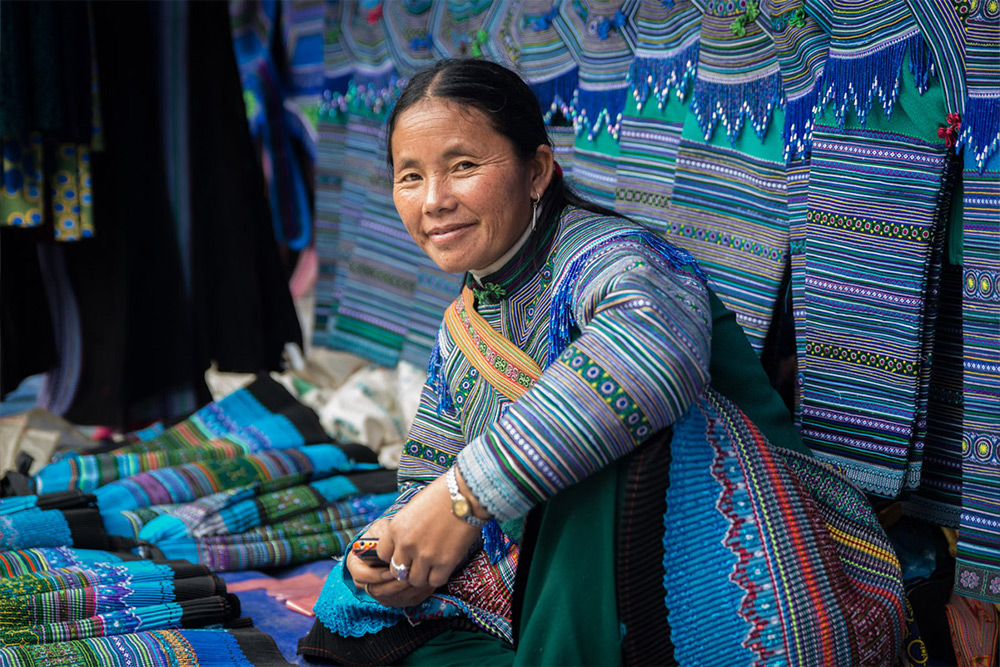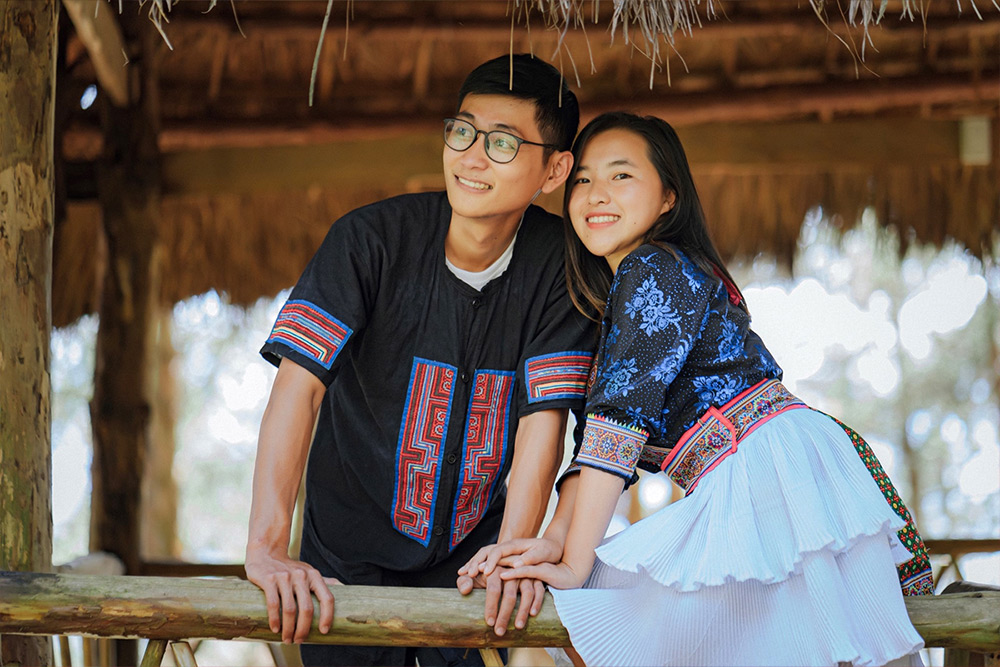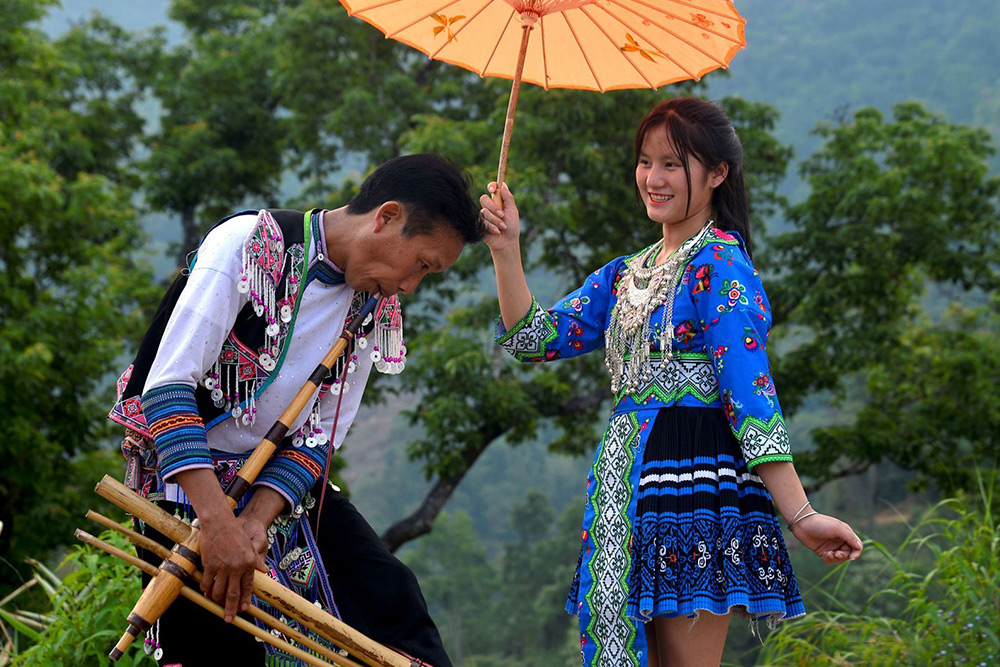When you first venture into the scenic landscapes of Sapa, Vietnam, one cultural highlight stands out—the intricate and vibrant art of Hmong brocade weaving. This centuries-old tradition not only reflects the rich heritage of the Hmong people but also offers an authentic experience for those seeking to understand the deeper roots of Vietnam's ethnic communities.
In this article, we’ll explore the history, techniques, and beauty behind Hmong brocade weaving in Sapa, guiding you on where to find authentic pieces to bring home as a meaningful memento from your trip.
The Hmong people are one of the largest ethnic minorities in the Sapa region, known for their vibrant culture and distinctive attire. One of the most compelling aspects of Hmong tradition is their brocade weaving—a skill passed down through generations, which has remained integral to their cultural identity.
For the Hmong, weaving is not merely a craft, but an expression of their identity, their connection to nature, and their beliefs. Every woven piece tells a story—whether it’s about the mountains, their ancestors, or their hopes for the future.

Hmong women in Sapa, starting from a young age, are taught to spin, dye, weave, and embroider intricate designs into brocade fabric. They primarily use hemp or cotton, both of which are grown locally, and the fibers are spun by hand to create the base of their textiles. These fabrics are then woven on traditional looms, where the intricate patterns and bold colors come to life.

Hmong brocade weaving in Sapa stands out for its bright, geometric designs, with colors that range from deep indigos to vibrant reds, yellows, and greens. These colorful patterns, often woven into skirts, scarves, and accessories, symbolize important elements of Hmong culture. For instance, geometric shapes like diamonds and triangles often represent fertility and protection, while patterns like flowers and animals illustrate their close relationship with nature.
To truly appreciate Hmong brocade weaving, it helps to understand the laborious and skillful process involved. The creation of a single piece of brocade require patience, skill, and an eye for detail. Each piece, whether it’s a skirt, scarf, or blanket, can take weeks or even months to complete.
The process begins with preparing the yarn, typically made from hemp or cotton. Hemp, in particular, is favored for its durability. The fibers are grown and harvested by the Hmong themselves, and once collected, they are spun by hand to create a fine thread.
Hmong women, particularly, are known for their expertise in preparing this material, ensuring it is both strong and fine for intricate designs. This yarn eventually becomes the foundation for the fabric to be woven.
The next step is dyeing the yarn, a task that showcases the Hmong’s deep connection to nature. The dyeing process relies heavily on natural ingredients—most notably, indigo, which is harvested from local plants. Indigo dyeing is a key part of Hmong textile culture, producing the deep blue that is a signature color in many of their traditional garments. The fabric is repeatedly dipped in indigo dye, each time deepening the color and ensuring a long-lasting hue.
Wax dyeing, also known as “vẽ sáp ong” (batik), is another crucial element of Hmong textile design. Using beeswax, artisans apply intricate patterns to the fabric using a special tool. The fabric is then dyed, usually in indigo, and after the dyeing is complete, the wax is removed, revealing the intricate designs in white. This technique creates a striking contrast between the deep blue fabric and the white patterns, adding another layer of artistry to the finished product.
When in Sapa, we would suggest our Asia Mystika travellers to visit local workshops in ethnic villages like Cat Cat or Lao Chai - Ta Van. There, you can see this dyeing process firsthand. The indigo dyeing process, unique to the Hmong people, has long fascinated those who appreciate natural dyes and sustainable fashion.
After the fabric is dyed, it is placed on traditional looms, where Hmong women weave complex geometric and symbolic patterns into the cloth. The time and patience involved in this step are staggering. Each piece of fabric can take weeks or even months to complete, depending on its size and complexity.
In local workshops, you will have a chance to witness these artisans at work. You can observe the intricate movements that go into crafting each piece, gaining a deeper appreciation for the skill and time involved.
Hmong traditional attire is more than just a form of clothing; it is a visual representation of their culture and values.
Hmong women’s attire usually consists of pleated skirts, jackets, belts, and intricately embroidered headscarves. Men’s traditional wear includes trousers and vests adorned with similar geometric patterns. Silver jewelry, often worn by both men and women, adds an extra layer of cultural significance, as it is believed to bring protection and good fortune.

The vibrant colors used in Hmong clothing symbolize various elements of life—red for prosperity, green for nature, yellow for joy, and blue for protection. The pleated skirts, in particular, are decorated with complex designs that represent fertility and the cycle of life, while the embroidered sashes and belts often symbolize protection and spiritual connection.

Hmong clothes are more than just decorative; they reflect the wearer's age, social status, and marital situation. For example, young girls often wear more colorful and elaborate outfits, while older women opt for more muted tones. During festivals and special events, like weddings or New Year celebrations, Hmong people wear their finest clothes, showcasing their cultural pride through their vibrant attire.
If you're visiting Sapa and want to take home an authentic piece of Hmong culture, several local markets and shops offer genuine brocade products. These items range from traditional skirts and scarves to modern adaptations like bags and home decor.
Sapa Market is one of the best places to shop for authentic brocade. Here, you’ll find a variety of handmade textiles, each sold by local artisans. You can often watch women weaving or embroidering as they sell their goods, giving you a firsthand look at the craftsmanship involved.

For a more curated shopping experience, Indigo Cat and Sapa Ethnic are well-regarded shops offering high-quality Hmong brocade products. These stores are known for maintaining the authenticity of their products, with many items made using traditional techniques and natural dyes.

When shopping for brocade in Sapa, keep in mind that you’re not just buying a piece of fabric—you’re supporting a centuries-old tradition and helping to preserve a unique part of Vietnam’s cultural heritage. Every stitch, motif, and color tells a story that reflects the Hmong way of life.
Hmong brocade weaving is more than just a craft; it is a testament to the Hmong people's resilience, creativity, and cultural pride. Visiting Sapa. as well as Northern Vietnam area in general, offers an unparalleled opportunity to witness this rich tradition up close. Whether you’re interested in the art of weaving, the symbolism behind the designs, or simply looking for a meaningful souvenir, Hmong brocade weaving provides a unique window into the heart of Sapa’s cultural landscape.
If you're planning a trip to Vietnam, don’t miss the opportunity to explore Sapa’s vibrant ethnic communities and discover the beauty of Hmong brocade weaving. Take home a piece of this tradition by visiting local markets or workshops, and help preserve the cultural heritage of the Hmong people.
Book your trip with us today and let us guide you through the enchanting world of Sapa’s traditional costumes!
Asia Mystika Travel is a Vietnamese local travel agency dedicated to bringing first-hand experience of lovely scenery, and distinctive indigenous cultures to every customer. With professional local tour guides and prestiged airline partners (4 domestic airlines and over 300+ international airlines), we offer unique local experience at an extremely reasonable price. All tours are 100% customizable, no shopping and no extra fee.
Contact us for a personalized travel itinerary according to your preferences:





